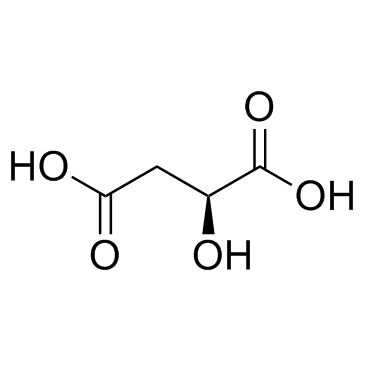Proteases
Proteases is a general term for a class of enzymes that hydrolyze protein peptide chains. According to the way they degrade polypeptides, they are divided into two categories: endopeptidases and telopeptidases. The former can cut the large molecular weight polypeptide chain from the middle to form prions and peptones with smaller molecular weights; the latter can be divided into carboxypeptidase and aminopeptidase, which respectively remove the peptide from the free carboxyl terminus or free amino terminus of the polypeptide one by one. Chain hydrolysis produces amino acids.
A general term for a class of enzymes that hydrolyze peptide bonds in proteins. According to the way they hydrolyze polypeptides, they can be divided into endopeptidases and exopeptidases. Endopeptidase cleaves the interior of the protein molecule to form smaller molecular weight peptones and peptones. Exopeptidase hydrolyzes peptide bonds one by one from the end of the free amino group or carboxyl group of protein molecules, and frees amino acids, the former is aminopeptidase and the latter is carboxypeptidase. Proteases can be classified into serine proteases, sulfhydryl proteases, metalloproteases and aspartic proteases according to their active centers and optimum pH. According to the optimum pH value of its reaction, it is divided into acidic protease, neutral protease and alkaline protease. The proteases used in industrial production are mainly endopeptidases.
Proteases are widely found in animal offal, plant stems and leaves, fruits and microorganisms. Microbial proteases are mainly produced by molds and bacteria, followed by yeast and actinomycetes.
Enzymes that catalyze the hydrolysis of proteins. There are many kinds, the important ones are pepsin, trypsin, cathepsin, papain and subtilisin. Proteases have strict selectivity for the reaction substrates they act on. A protease can only act on certain peptide bonds in protein molecules, such as the peptide bonds formed by the hydrolysis of basic amino acids catalyzed by trypsin. Proteases are widely distributed, mainly in the digestive tract of humans and animals, and are abundant in plants and microorganisms. Due to limited animal and plant resources, the industrial production of protease preparations is mainly prepared by fermentation of microorganisms such as Bacillus subtilis and Aspergillus terrestris.
Targets for Proteases
- Caspase(91)
- Aminopeptidase(20)
- ACE(74)
- Calpains(11)
- Carboxypeptidase(9)
- Cathepsin(75)
- DPP-4(18)
- Elastase(24)
- Gamma Secretase(46)
- HCV Protease(37)
- HSP(100)
- HIV Integrase(29)
- HIV Protease(34)
- MMP(207)
- NS3/4a protease(4)
- Serine Protease(11)
- Thrombin(48)
- Urokinase(2)
- Cysteine Protease(0)
- Other Proteases(15)
- Tyrosinases(46)
- 15-PGDH(1)
- Acetyl-CoA Carboxylase(14)
- Acyltransferase(56)
- Aldehyde Dehydrogenase (ALDH)(28)
- Aminoacyl-tRNA Synthetase(9)
- ATGL(1)
- Dipeptidyl Peptidase(48)
- Drug Metabolite(466)
- E1/E2/E3 Enzyme(83)
- Endogenous Metabolite(1709)
- FABP(30)
- Farnesyl Transferase(21)
- Glutaminase(16)
- Glutathione Peroxidase(15)
- Isocitrate Dehydrogenase (IDH)(26)
- Lactate Dehydrogenase(18)
- Lipoxygenase(233)
- Mitochondrial Metabolism(209)
- NEDD8-activating Enzyme(6)
- Neprilysin(12)
- PAI-1(13)
- Ser/Thr Protease(46)
- Tryptophan Hydroxylase(11)
- Xanthine Oxidase(18)
- MALT1(10)
- PCSK9(9)
Products for Proteases
- Cat.No. Nom du produit Informations
-
GC11282
β-Estradiol
β-Estradiol, Estradiol, 17β-Oestradiol, E2
Hormone sexuelle
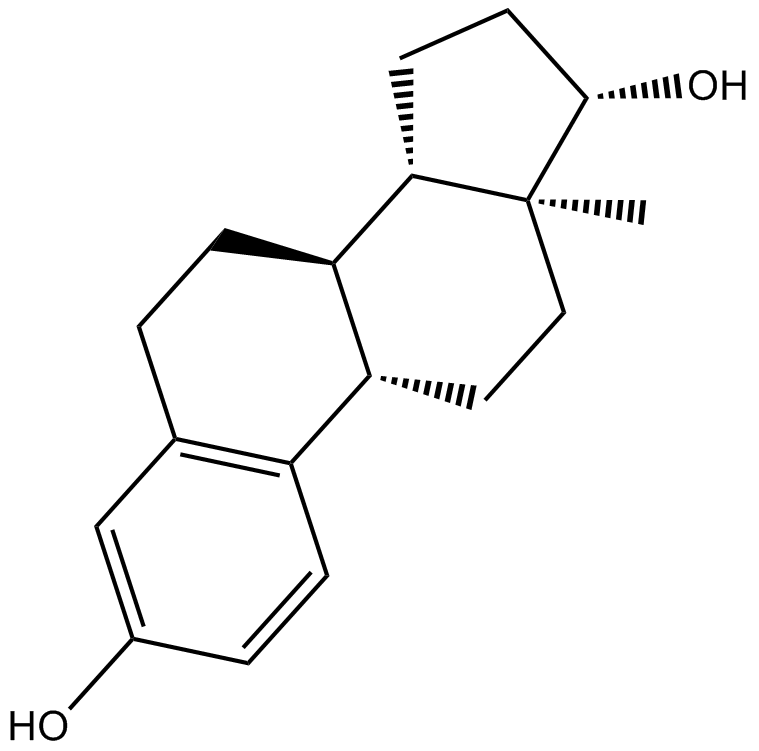
-
GC41183
α-Carotene
all-trans-α-Carotene
α-Le carotène, précurseur de la vitamine A, est utilisé comme agent anti-métastatique ou comme adjuvant pour les médicaments anticancéreux. α-Le carotène est isolé À partir de légumes jaune-orange et vert foncé.
-
GC45208
α-hydroxy Metoprolol
α-hydroxy Metoprolol is an active metabolite of the β1-adrenergic receptor blocker metoprolol.

-
GC48948
α-Ketoglutaric Acid (sodium salt)
α-KGA, 2-Oxoglutaric Acid
α-L'acide cétoglutarique (sel de sodium) (acide alpha-cétoglutarique de sodium) est un intermédiaire dans la production d'ATP ou de GTP dans le cycle de Krebs.
-
GC40718
α-Muricholic Acid
5β-Cholanic Acid-3α,6β,7α-triol
α-L'acide muricholique est l'acide biliaire primaire le plus abondant chez les rongeurs.
-
GC40480
α-Phenyl-α-(2-pyridyl)acetonitrile
NSC 16276, 2-Pyridylphenylacetonitrile
α-Phenyl-α-(2-pyridyl)thioacetamide, also known as antigastrin and SC-15396, is an inhibitor of gastric acid secretion.
-
GC38287
α-Pyridone
α-La pyridone est un métabolite endogène.
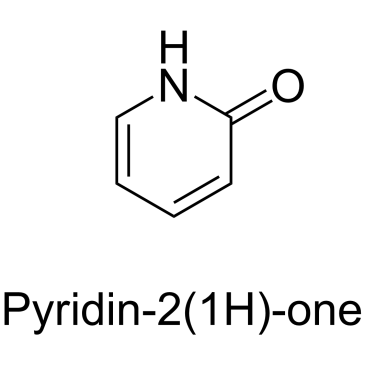
-
GC38000
β-Boswellic acid
β ; - L'acide boswellique est isolé de la résine de gomme de Boswellia serrate.β ; - L'acide boswellique est un inhibiteur de type non réducteur de la formation de produit de 5-lipoxygénase (5-LO) qui interagit directement avec le 5-LO ou bloque sa translocation . β-L'acide boswellique inhibe la synthèse d'ADN, d'ARN et de protéines dans les cellules de leucémie humaine HL-60.
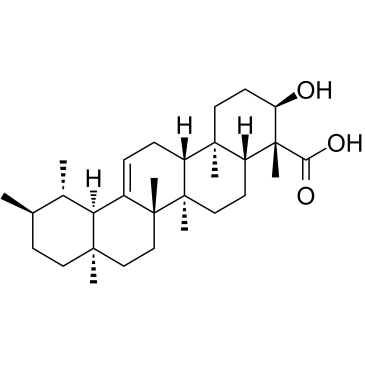
-
GC71980
β-Caryophyllene-d2
β-Caryopllene-d2 is deuterium labeled β-Caryopllene.

-
GC63275
β-Cryptoxanthin
β-Cryptoxanthine ((3R)-β-Cryptoxanthine), isolée de la mandarine Satsuma, est un caroténoïde oxygéné et un puissant antioxydant.
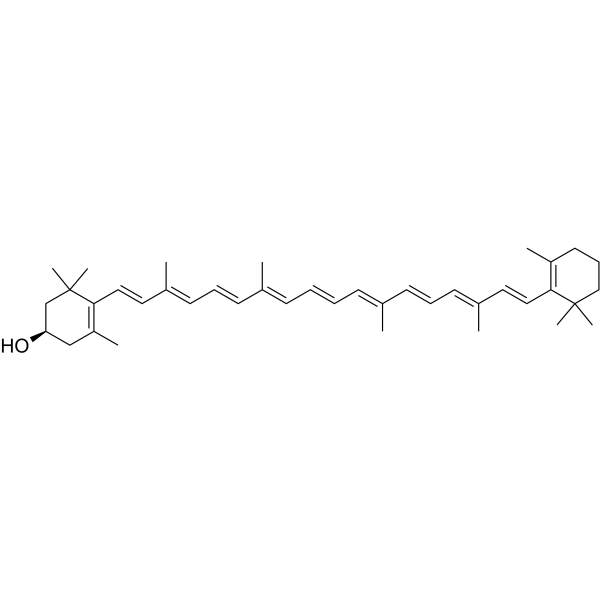
-
GC40777
β-D-Glucose
NSC 287045
D-Glucose, a naturally occurring monosaccharide found in plants, is the primary energy source for living organisms.

-
GC66842
β-Methylcrotonyl coenzyme A lithium
β-méthylcrotonyl coenzyme A lithium est un intermédiaire dans le métabolisme de la leucine et peut être utilisé comme substrat pour étudier la spécificité et la cinétique de β-méthylcrotonyl coenzyme A carboxylase (MCCase).
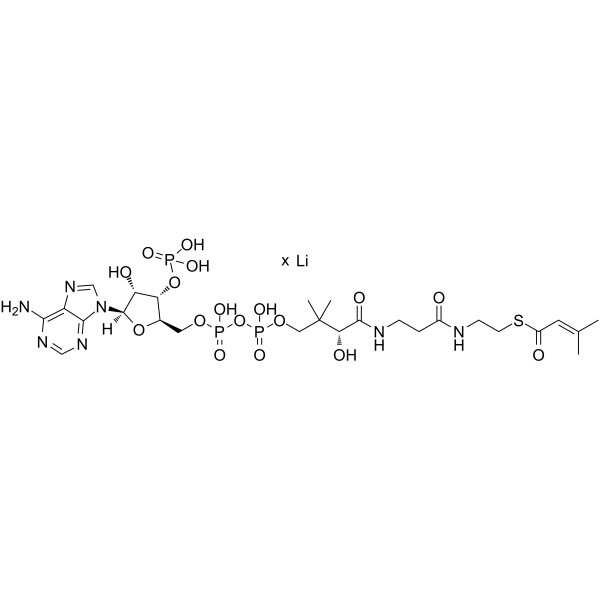
-
GC40719
β-Muricholic Acid
5β-Cholanic Acid-3α,6β,7β-triol, β-MCA
Un acide biliaire primaire spécifique à la souris

-
GC67484
β-Nicotinamide adenine dinucleotide reduced dipotassium
&88888946;-Nicotinamide adénine dinucléotide dipotassique réduit est une coenzyme réduite oralement active. &88888946;-Nicotinamide adénine dinucléotide dipotassique réduit est un donneur d'unités ADP-ribose dans les réactions ADP-ribosylaton et un précurseur de l'ADP-ribose cyclique. β-Nicotinamide adénine dinucléotide dipotassique réduit joue un rôle en tant que donneur d'électrons régénératif dans le métabolisme énergétique cellulaire, y compris la glycolyse, β-oxydation et le cycle de l'acide tricarboxylique (TCA).
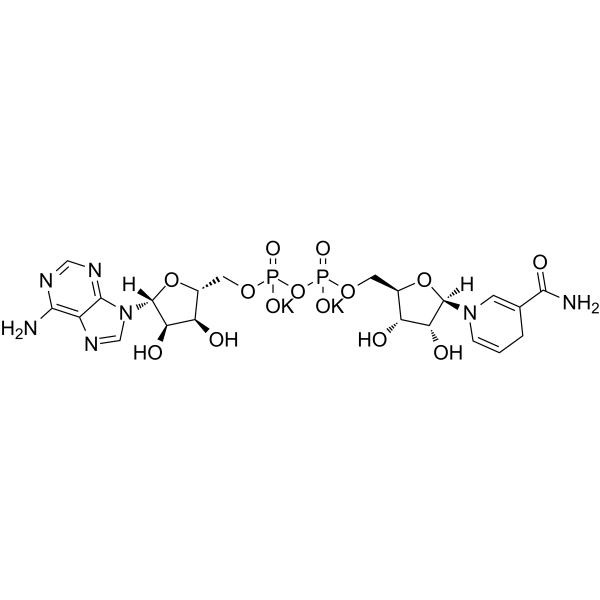
-
GC70185
β-Sitostenone
δ4-Sitosterol-3-one; β-Rosasterol oxide
β-Sitostenone est un stérol isolé à partir de Cochlospermum vitifolium. Il peut inhiber l'activité de la tyrosinase et possède des propriétés anti-mélanogéniques et anti-tumorales.

-
GC38010
γ-Aminobutyric acid
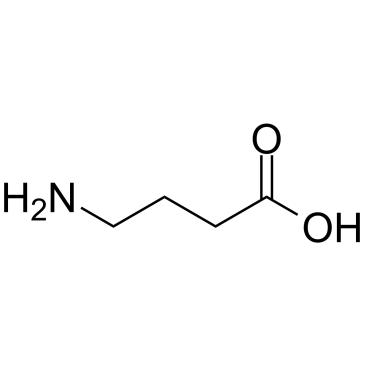
-
GC63279
γ-Glu-Gly TFA
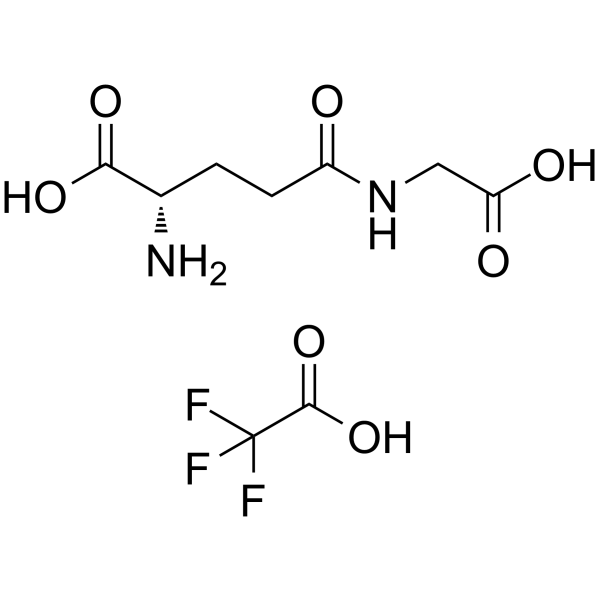
-
GC38011
γ-Secretase modulator 4
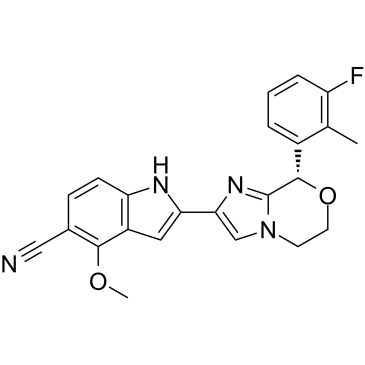
-
GC66048
δ-Secretase inhibitor 11
δ-L'inhibiteur de sécrétase 11 (composé 11) est un &7#948;-inhibiteur de sécrétase actif par voie orale, puissant, pénétré dans la BHE, non toxique, sélectif et spécifique, avec une IC50 de 0,7 μM. δ-l'inhibiteur de sécrétase 11 interagit À la fois avec le site actif et le site allostérique de la δ-sécrétase. δ ; - L'inhibiteur de sécrétase 11 atténue le clivage de tau et de l'APP (protéine précurseur de l'amyloÏde). δ-L'inhibiteur de sécrétase 11 améliore le dysfonctionnement synaptique et les troubles cognitifs dans les modèles de souris transgéniques tau P301S et 5XFAD. δ ; - L'inhibiteur de sécrétase 11 peut être utilisé pour la recherche sur la maladie d'Alzheimer.
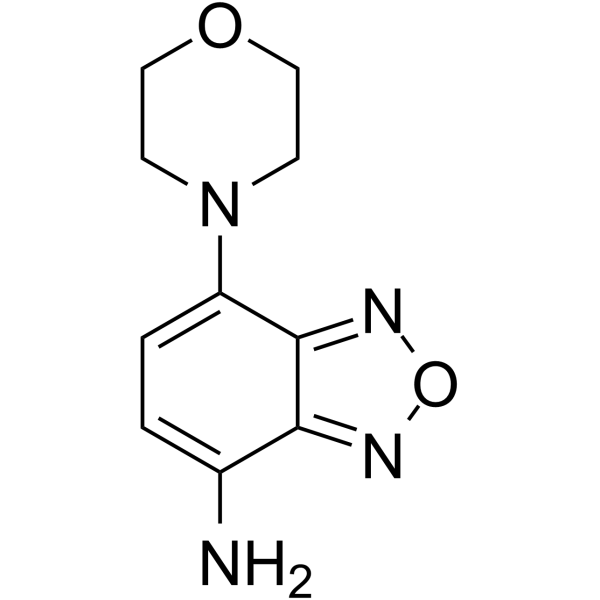
-
GC15975
α-Estradiol
Alfatradiol, α-Estradiol, 17-epi Estradiol, NSC 20293, 17α-Oestradiol
Le α-estradiol est un œstrogène faible et un inhibiteur de la 5α-réductase qui est utilisé comme médicament topique dans le traitement de l'alopécie androgénique.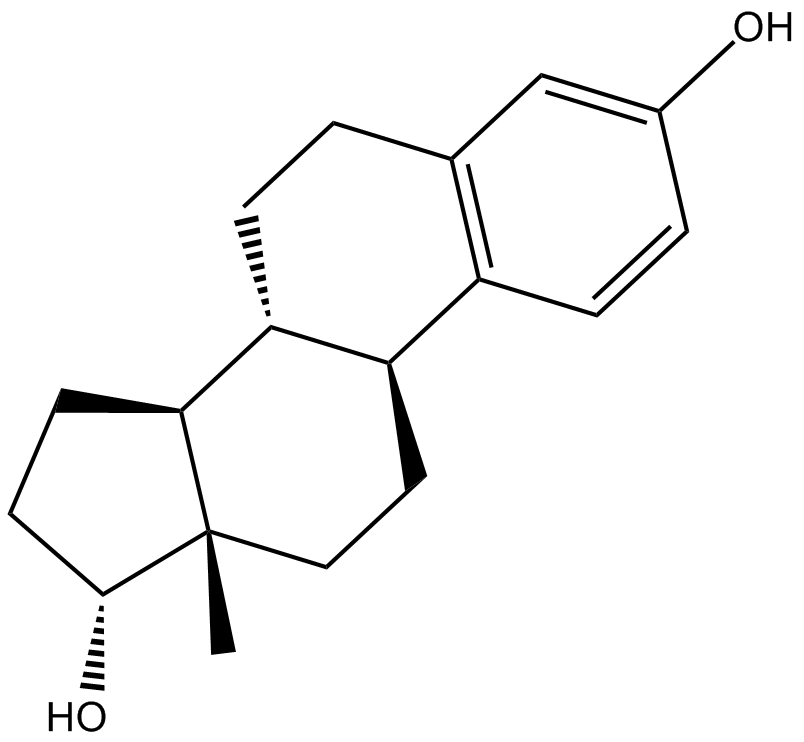
-
GC30187
γ-Glu-Phe (γ-Glutamylphenylalanine)
γ-Glutamylphenylalanine
γ-Glu-Phe (γ-Glutamylphenylalanine) (γ-Glutamylphenylalanine) est synthétisé par Bacillus amyloliquefaciens (GBA) et Aspergillus oryzae (GAO).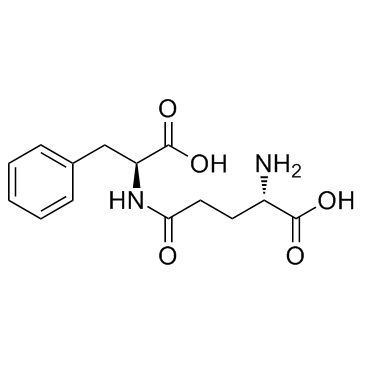
-
GC41552
ω-3 Arachidonic Acid
ω3 AA
ω-3 Arachidonic acid is a rare PUFA found in trace amounts in dietary sources.
-
GC40259
(±)-β-Tocopherol
DL-β-Tocopherol, rac-β-Tocopherol
(±)-β-Tocopherol is a lipid-soluble form of vitamin E with antioxidant activity.
-
GC40260
(±)-γ-Tocopherol
7,8-Dimethyltocol, all-rac-γ-Tocopherol, DL-γ-Tocopherol
(±)-γ-Tocopherol is a form of vitamin E with antioxidant and anti-inflammatory properties.
-
GC41661
(±)-4-hydroxy Propranolol β-D-Glucuronide
(±)-4-hydroxy Propranolol β-D-glucuronide is a metabolite of (±)-4-hydroxy propranolol, which is a metabolite of propranolol.

-
GC34961
(±)-BI-D
(±) -BI-D est un puissant ALLINI (un inhibiteur allostérique IN) qui se lie à l'intégrase au site de liaison LEDGF/p75.
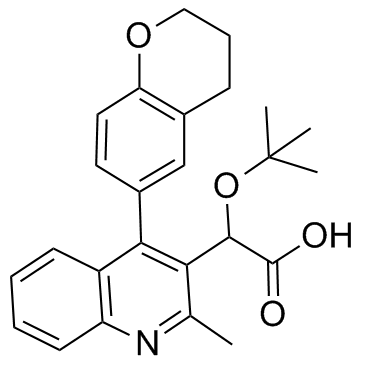
-
GC46284
(±)-Cotinine-d3
An internal standard for the quantification of cotinine

-
GC41670
(±)-Epinephrine (hydrochloride)
(±)-Adrenaline, DL-Adrenaline, DL-Epinephrine
(±)-Epinephrine is a natural neurotransmitter that is released from the adrenal medulla and activates adrenoceptors (Kis = 15, 735, and 3,970 nM for α1A-, β2-, and β1-adrenergic receptors, respectively).
-
GC41671
(±)-Equol 4'-sulfate (sodium salt)
R,S-Equol 4'-Sulfate
(±)-Equol 4'-sulfate is a gut-mediated phase II metabolite of the isoflavonoid phytoestrogen (±)-equol.

-
GC41315
(±)-Ketoprofen Glucuronide
rac-Ketoprofen Acyl-β-D-glucuronide, (R,S)-Ketoprofen Glucuronide
(±)-Ketoprofen glucuronide is a phase II metabolite of the non-steroidal anti-inflammatory drug (NSAID) ketoprofen.

-
GC38369
(±)-Leucine

-
GC65599
(±)-Leucine-d10
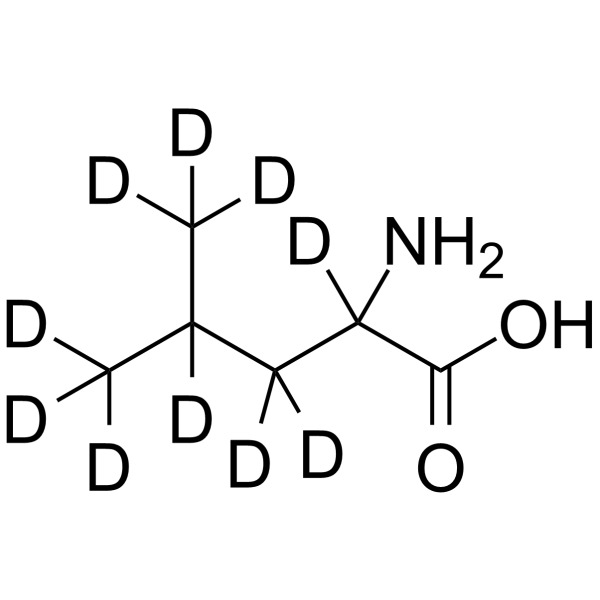
-
GC49875
(±)-N-desmethyl Venlafaxine (hydrochloride)
Wy 45494
A minor active metabolite of venlafaxine
-
GC39271
(±)-Naringenin
SDihydrogenistein, NSC 11855, NSC 34875, Salipurol
(±)-La naringénine est un flavonoïde naturel.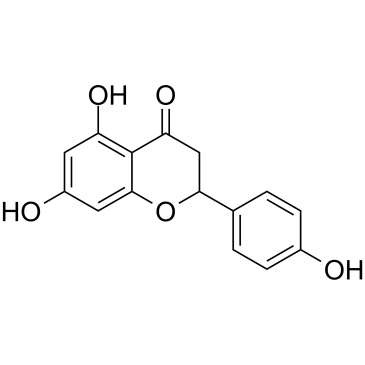
-
GC13890
(±)-Palmitoylcarnitine chloride
C16:0 Carnitine, CAR 16:0, DL-Carnitine hexadecanoyl ester, DL-Carnitine palmitoyl ester, Hexadecanoyl-DL-carnitine, DL-Hexadecanoylcarnitine, NSC 628323, DL-Palmitoylcarnitine
(M) -Le chlorure de palmitoylcarnitine est un substrat mitochondrial dérivé d'acide gras et diminue sélectivement la survie des cellules dans les cellules cancéreuses colorectales et de la prostate en affectant les voies pro-inflammatoires, l'influx de Ca2+ et les effets de type DHT.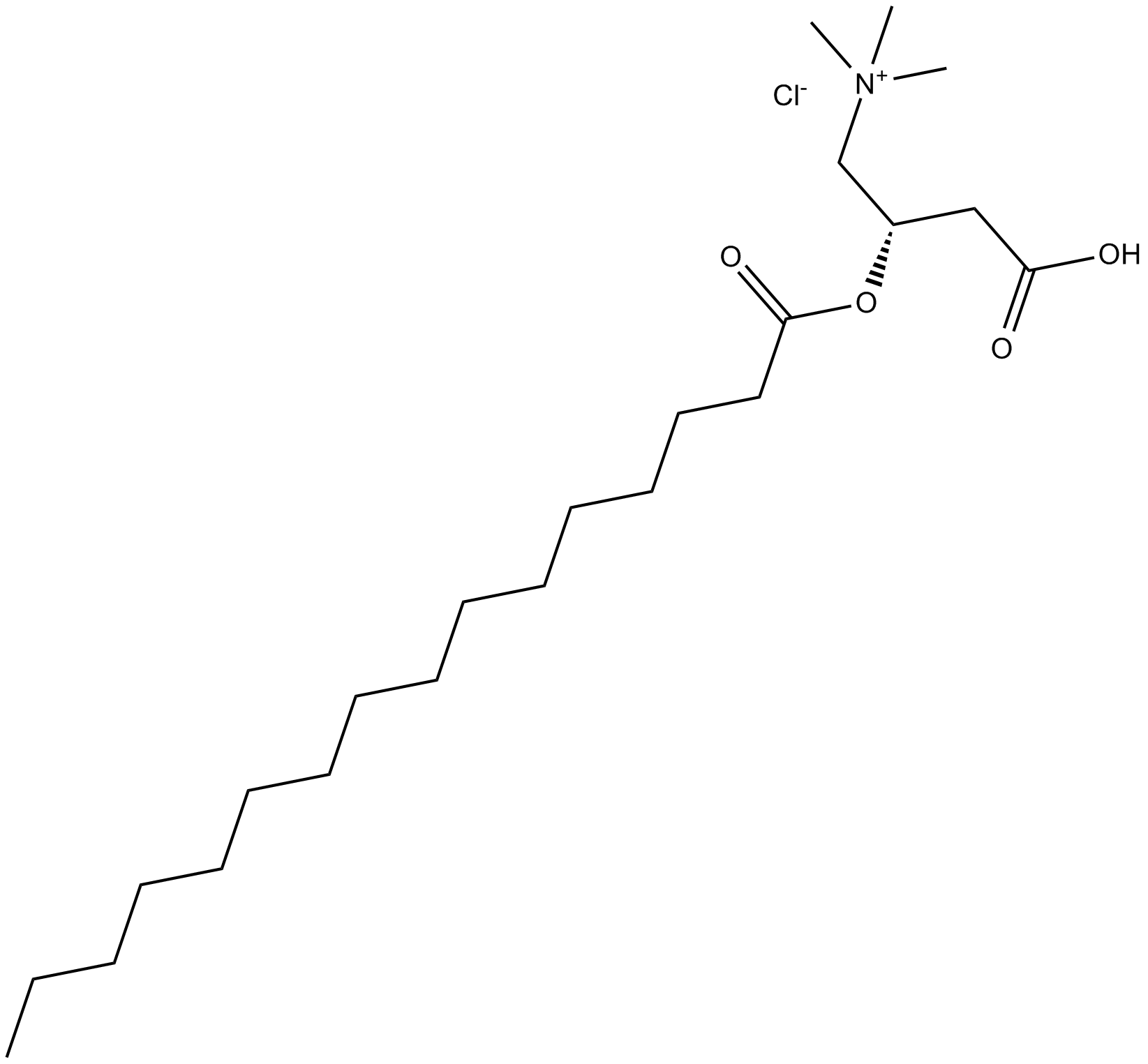
-
GC40229
(±)-Warfarin-d5
(±)-Warfarin-d5 is intended for use as an internal standard for the quantification of warfarin by GC- or LC-MS.

-
GC41649
(±)13-HODE cholesteryl ester
(±)13-HODE cholesteryl ester was originally extracted from atherosclerotic lesions and shown to be produced by Cu2+-catalyzed oxidation of LDL.
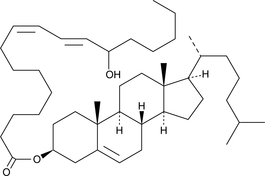
-
GC19444
(±)20-HDHA
20hydroxy Docosahexaenoic Acid, (±)20HDoHE
(±)20-HDHA ((±)20-HDoHE) est un mélange racémique et est un produit d'auto-oxydation de l'acide docosahexaénoïque (DHA).
-
GC40828
(±)5-HETE lactone
(±)5-Hydroxyeicosatetraenoic Acid lactone
(±)5-HETE lactone is a cyclic ester formed by acid-catalyzed nucleophilic addition of the C-5 hydroxyl to the C-1 carboxyl of (±)5-HETE.
-
GC40442
(±)8-HETE
(±)8-Hydroxyeicosatetraenoic Acid
(±)8-HETE est l'un des six acides gras monohydroxylés produits par l'oxydation non enzymatique de l'acide arachidonique.
-
GC40801
(±)9(10)-DiHOME
Leukotoxin diol
(±)9(10)-DiHOME est le racémate de 9,10-DiHOME.
-
GC41666
(±)9-HODE cholesteryl ester
(±)9-HODE cholesteryl ester was originally extracted from atherosclerotic lesions and shown to be produced by Cu2+-catalyzed oxidation of LDL.
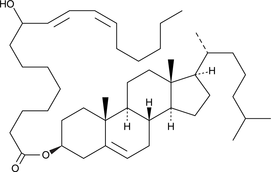
-
GC30586
(±) Anabasine
(±) Anabasine est un relaxant musculaire biphasique.
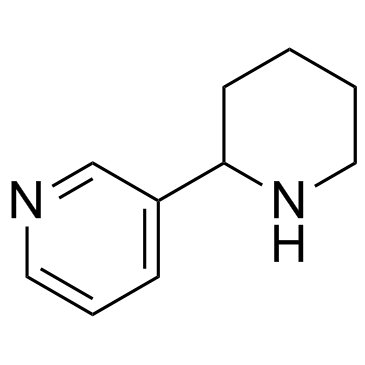
-
GC61647
(+)-Longifolene
(+) - Le longifolène est un sesquiterpénoÏde et un métabolite chez le lapin.
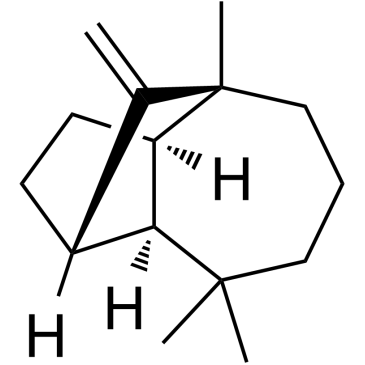
-
GC10675
(+,-)-Octopamine HCl
β,4-Dihydroxyphenethylamine, Epirenor, Norfen, NSC 108685, (±)-4-Octopamine, (±)-p-Octopamine
Le chlorhydrate d'octopamine ((±)-p-octopamine), une monoamine biogénique structurellement apparentée À la noradrénaline, agit comme une neurohormone, un neuromodulateur et un neurotransmetteur chez les invertébrés.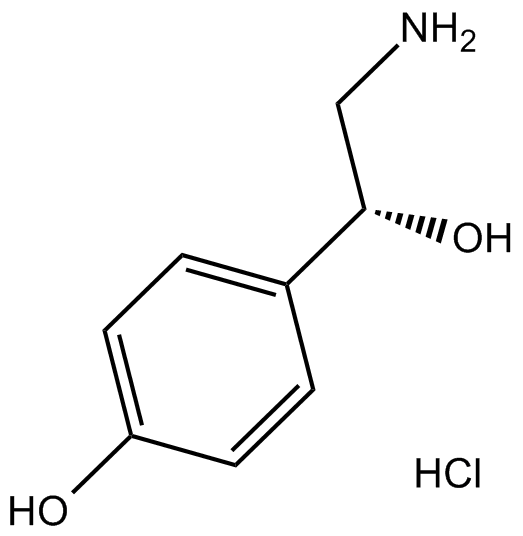
-
GC45245
(-)-Caryophyllene oxide
BCP oxide, β-Caryophyllene epoxide, β-Caryophyllene oxide
Oxyde de (-)-caryophyllène, isolé de Annona squamosa L.
-
GC17470
(-)-Cotinine
NIH 10498
La (-)-cotinine ((-)-(-)-cotinine), un alcaloïde du tabac et un métabolite majeur de la nicotine, est utilisée comme indicateur biologique pour mesurer la composition de la fumée de tabac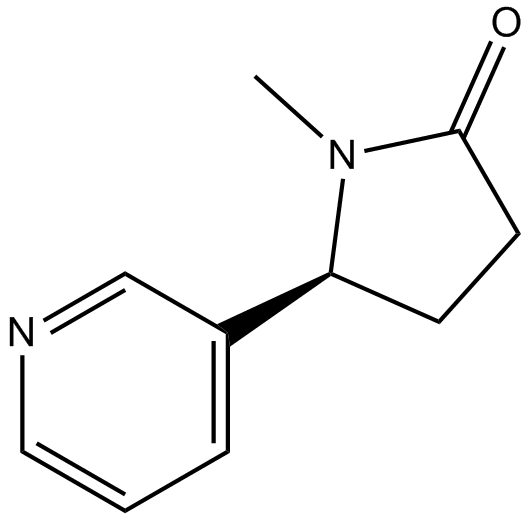
-
GC17242
(-)-epigallocatechin
(-)EGC, epi-Gallocatechin, NSC 674039
La (-)-épigallocatéchine (épigallocatéchine) est le flavonoÏde le plus abondant dans le thé vert, peut se lier aux polypeptides natifs dépliés et empêcher la conversion en fibrilles amyloÏdes.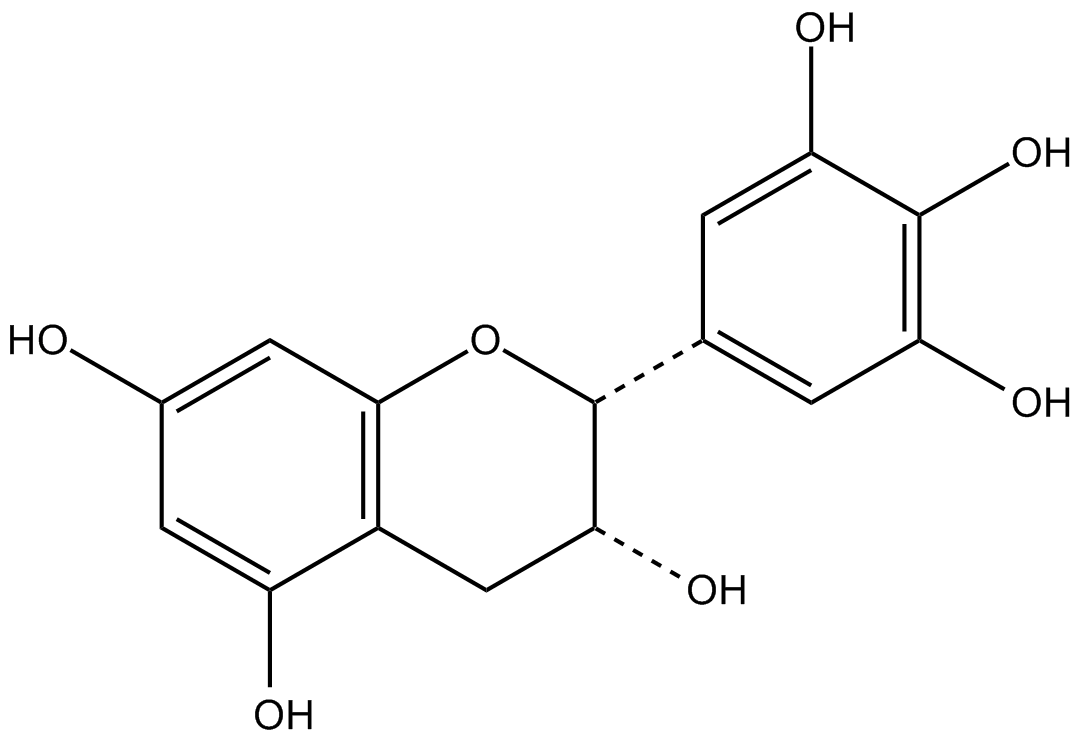
-
GC14049
(-)-Epigallocatechin gallate (EGCG)
EGCG
Un phénol avec des activités biologiques diverses.
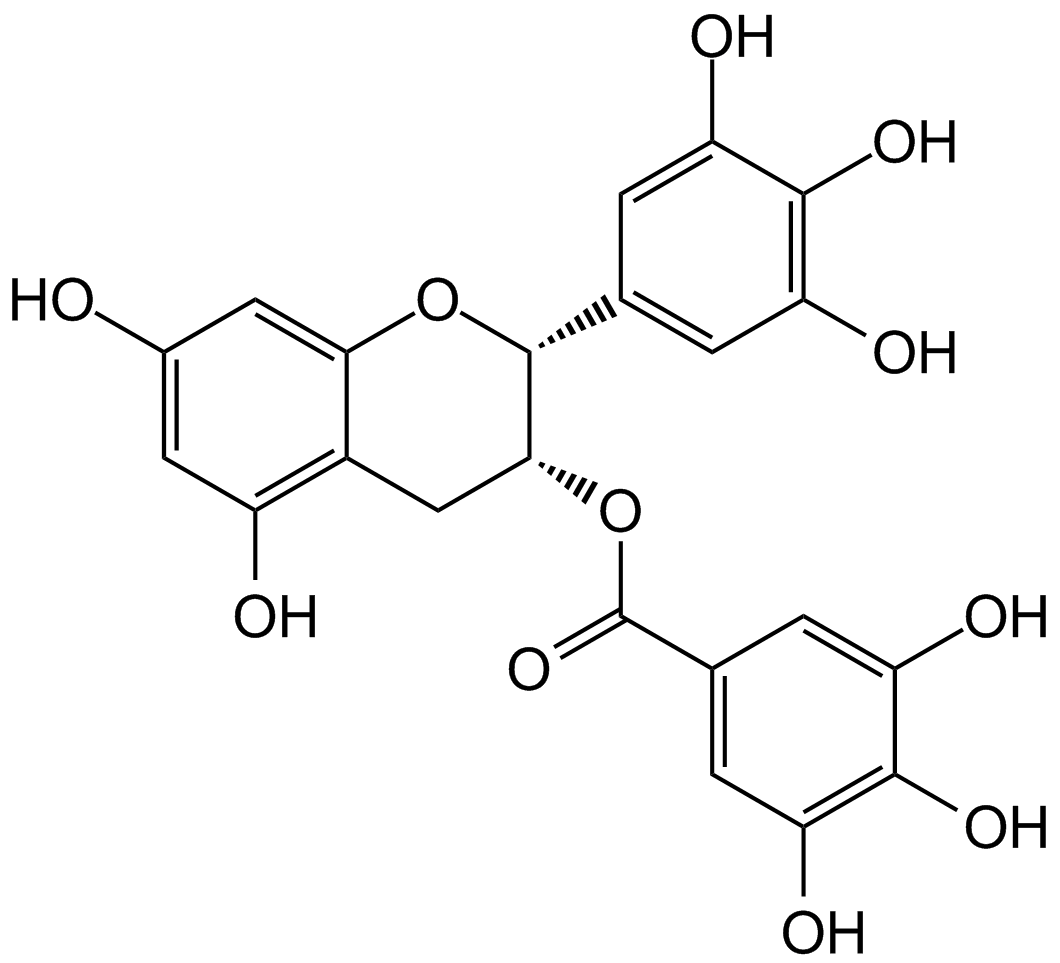
-
GC34951
(-)-Menthol
L-Menthol, (1R,2S,5R)-(-)-Menthol, NSC 62788
Le (-)-menthol est un composant clé de l'huile de menthe poivrée qui lie et active la mélastatine potentielle de récepteur transitoire 8 (TRPM8), un canal cationique non sélectif perméable au Ca2+-, pour augmenter [Ca2+]i. Activité antitumorale.
-
GC45252
(-)-Sitagliptin Carbamoyl Glucuronide
(R)-Sitagliptin Carbamoyl Glucuronide
(-)-Sitagliptin carbamoyl glucuronide is a minor phase II metabolite of the dipeptidyl peptidase 4 (DPP-4) inhibitor (-)-sitagliptin.
-
GC18622
(2'S)-Nicotine-1-oxide
Nicotine-N-oxide
(2'S)-Nicotine-1-oxide is a metabolite of nicotine .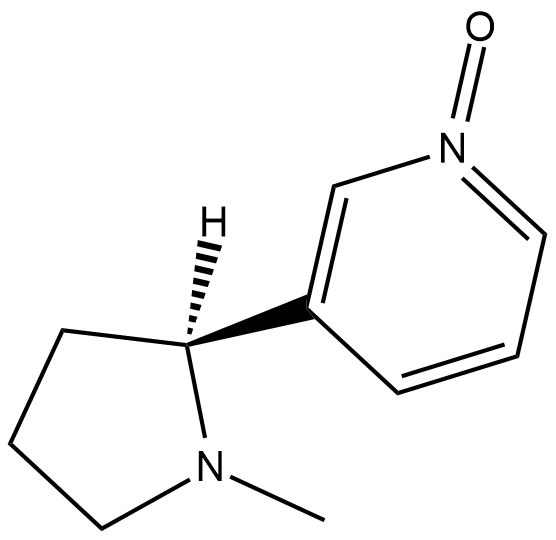
-
GC38299
(2-Aminoethyl)phosphonic acid
L'acide (2-aminoéthyl)phosphonique est un métabolite endogène.
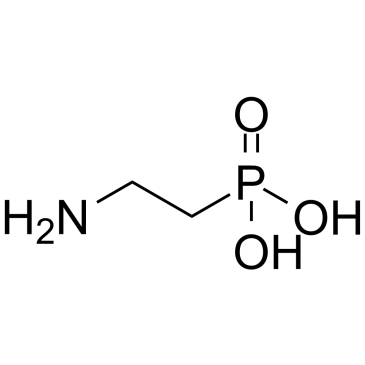
-
GC68509
(25R)-12α-Hydroxyspirost-4-en-3-one
(25R)-12α-Hydroxyspirost-4-en-3-one est un métabolite secondaire produit par l'action de Nocardia globerula sur l'Hécogénine.
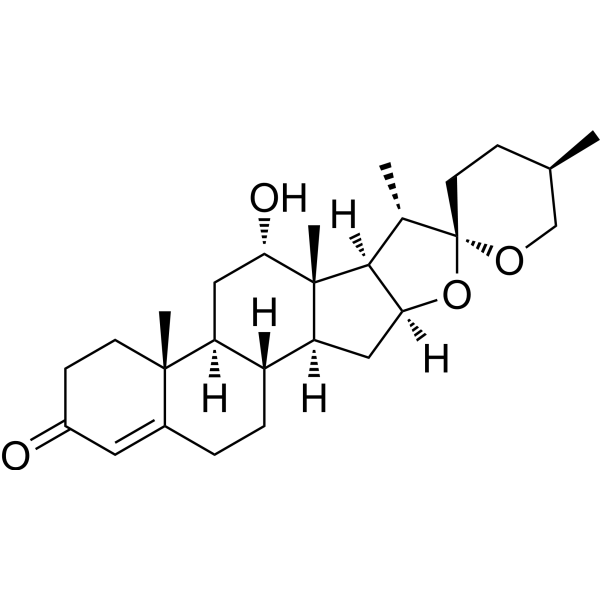
-
GC38265
(2R,3R)-2,3-Dihydroxysuccinic acid
L'acide (2R,3R)-2,3-dihydroxysuccinique (acide L-(+)-tartrique) est un métabolite endogène.

-
GC62731
(2R,3R)-Butane-2,3-diol
Le (2R,3R)-butane-2,3-diol est un métabolite endogène.

-
GC38296
(2S,3R,4S,5R)-2-Amino-3,4,5,6-tetrahydroxyhexanal hydrochloride
Le chlorhydrate de (2S,3R,4S,5R)-2-amino-3,4,5,6-tétrahydroxyhexanal est un métabolite endogène.

-
GC33797
(3-Carboxypropyl)trimethylammonium chloride
Le chlorure de (3-carboxypropyl)triméthylammonium est une substance angiopathique produite comme métabolite intermédiaire par le microbiote intestinal qui se nourrit de carnitine dans la viande rouge alimentaire.
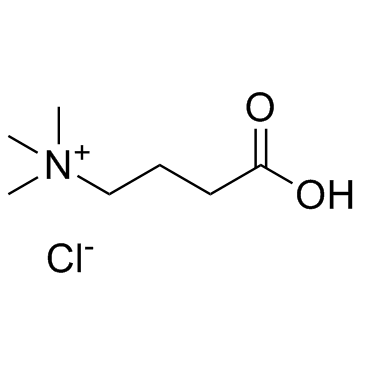
-
GC41694
(3S)-hydroxy Quinidine
(3S)-hydroxy Quinidine is an active quinidine metabolite.

-
GC38144
(3S,4R,5S)-1,3,4,5,6-Pentahydroxyhexan-2-one
A monosaccharide
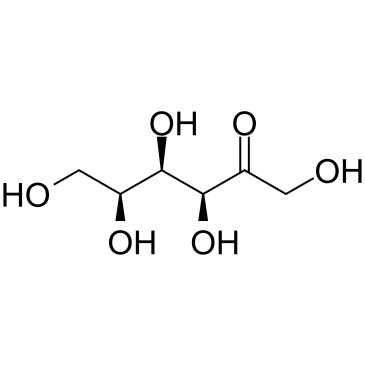
-
GC38283
(3S,4S,5R)-1,3,4,5,6-Pentahydroxyhexan-2-one
Le (3S,4S,5R)-1,3,4,5,6-Pentahydroxyhexan-2-one (D-(-)-Tagatose) est un monosaccharide rare présent dans la nature avec des caractéristiques prébiotiques.

-
GC12395
(D)-(+)-Neopterin
La (D)-(+)-néoptérine (D-(+)-(D)-(+)-néoptérine), un produit catabolique de la guanosine triphosphate (GTM), sert de marqueur de l'activation du système immunitaire cellulaire.
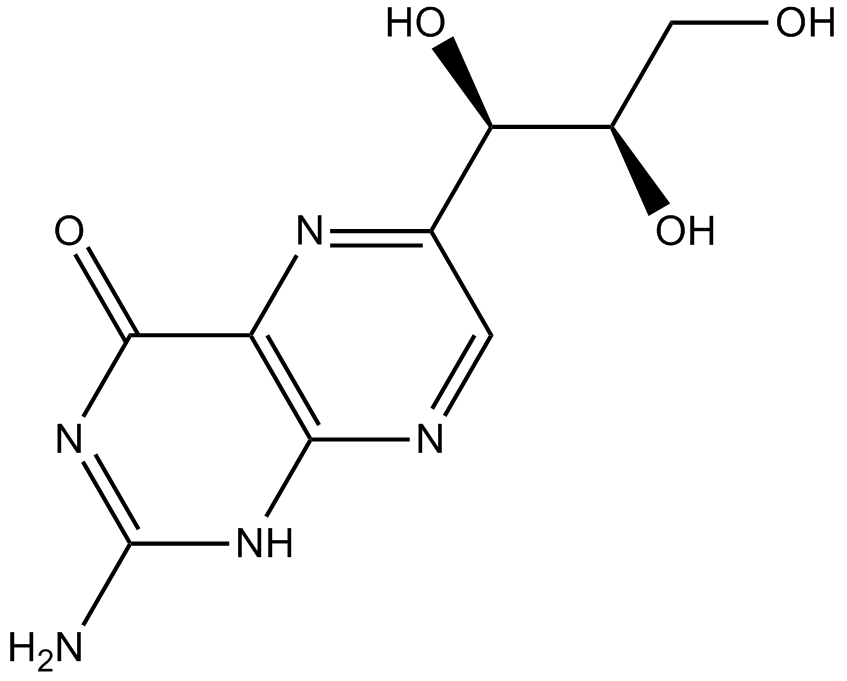
-
GC60399
(E)-10-Hydroxynortriptyline
10(E)-hydroxy Nortriptyline
La (E)-10-hydroxynortriptyline (E-10-OH-NT) est un métabolite de la nortriptyline.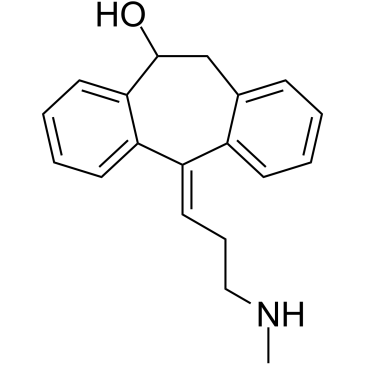
-
GC65239
(E)-3,4-(Methylenedioxy)cinnamic acid
L'acide (E)-3,4-(méthylènedioxy)cinnamique est un dérivé de l'acide cinnamique obtenu À partir de l'écorce de tige de Brombya platynema.
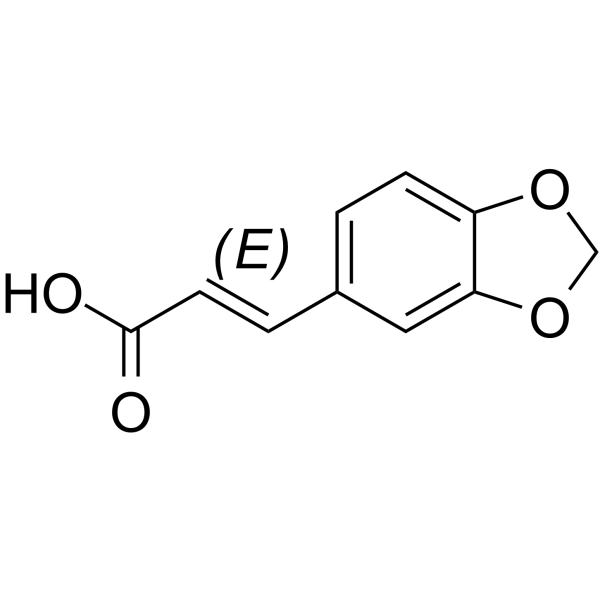
-
GC38684
(E)-m-Coumaric acid
L'acide (E)-m-coumarique (acide 3-hydroxycinnamique) est un acide aromatique très abondant dans les aliments.
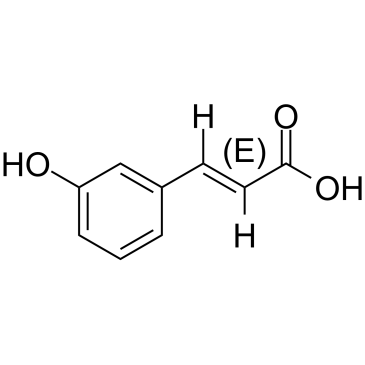
-
GC62734
(E)-Oct-2-enoic acid
L'acide (E)-Oct-2-énoÏque est un métabolite endogène.
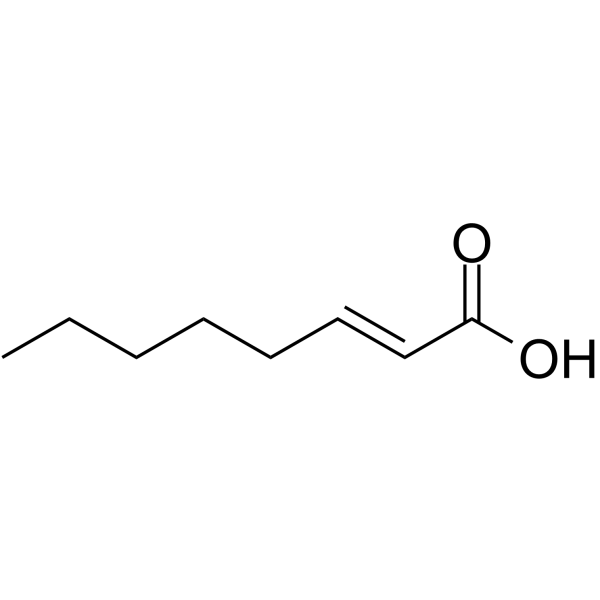
-
GC40286
(E,Z)-2-propyl-2-Pentenoic Acid
2-propyl-2-Pentenoate, 2-propylpenten-2-oic Acid, 2-ene-VPA
(E,Z)-2-propyl-2-Pentenoic acid is a bioactive metabolite of valproic acid that exhibits the same profile and potency of anticonvulsant activity in animal models as its parent compound without any observed teratogenicity and hepatotoxicity.
-
GC49189
(E/Z)-4-hydroxy Tamoxifen-d5
Afimoxifene-d5, 4-OHT-d5
An internal standard for the quantification of (E/Z)-4-hydroxy tamoxifen
-
GC60404
(Ethoxymethyl)benzene
Le (éthoxyméthyl)benzène est un métabolite endogène.
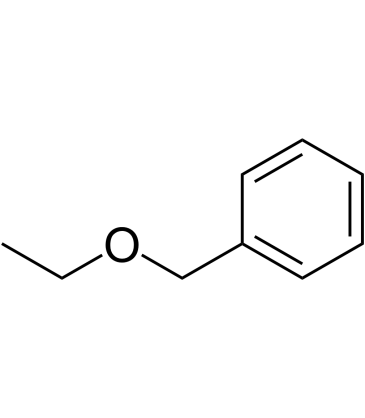
-
GA11210
(H-Cys-OH)2
(–)-Cystine, NSC 13203
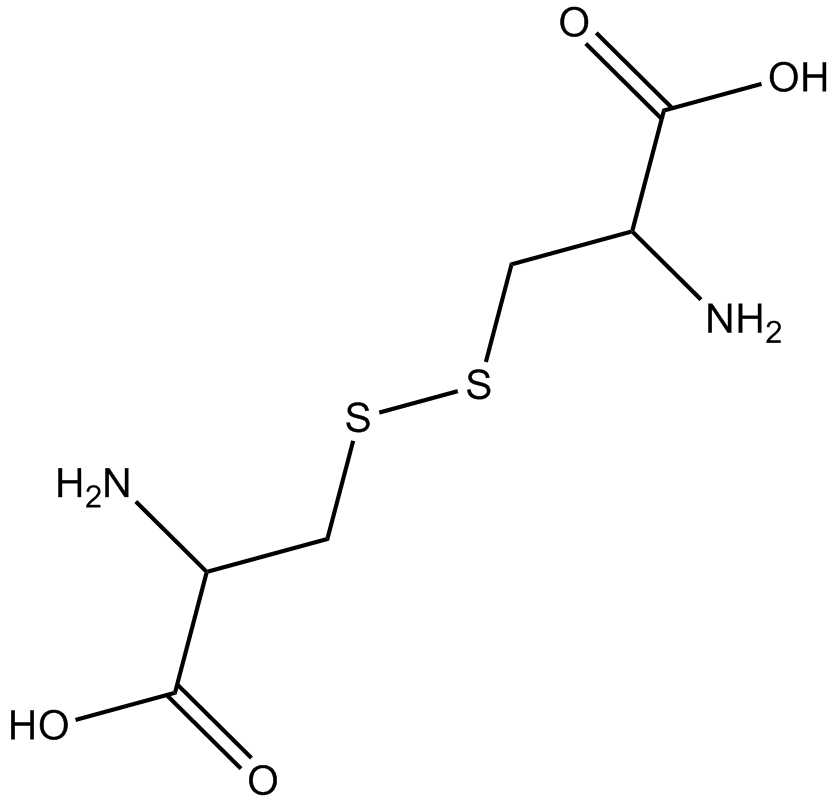
-
GN10783
(R) Ginsenoside Rh2
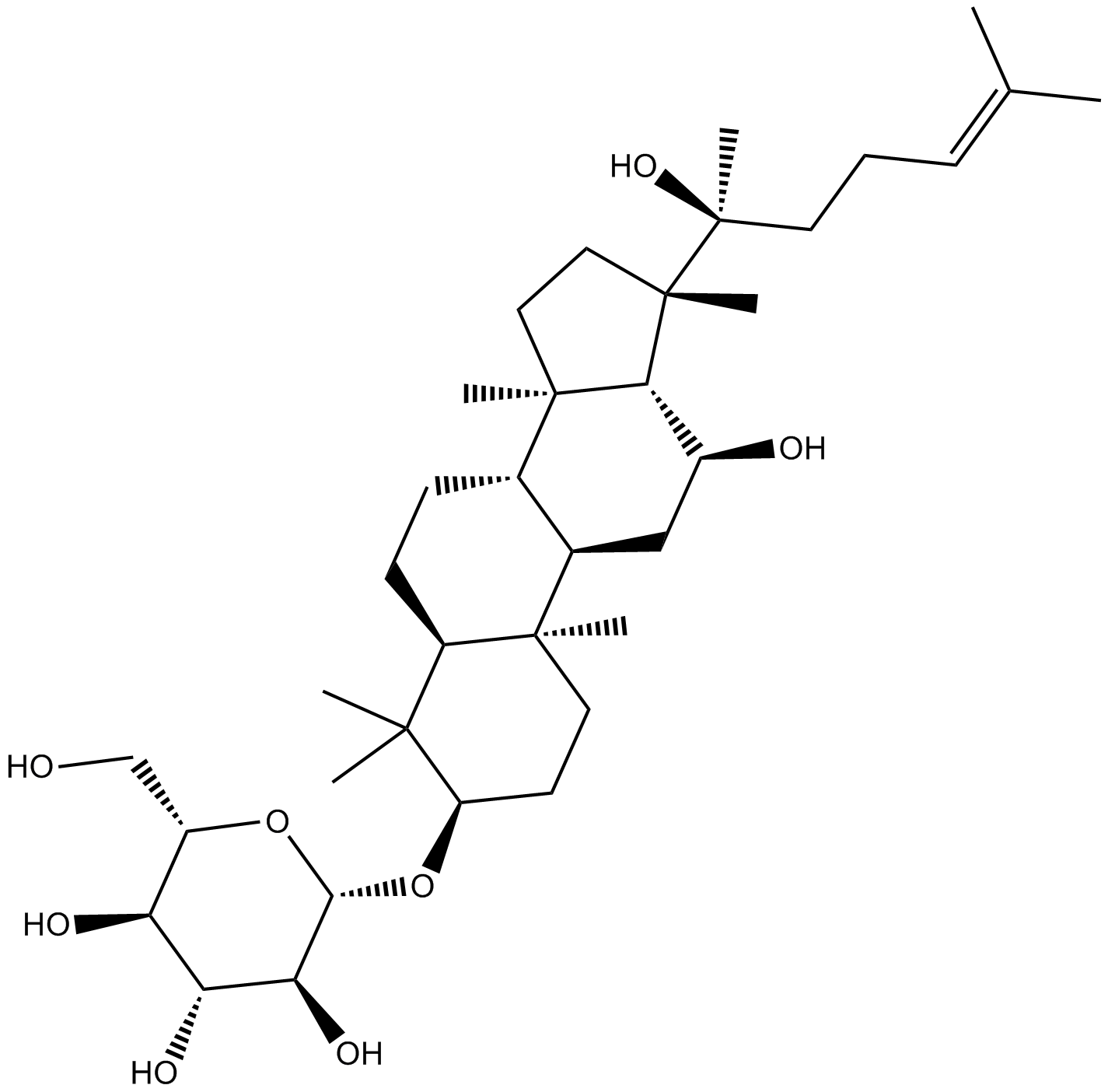
-
GC41721
(R)-α-Lipoic Acid
(R)-(+)-Lipoic Acid
(R)-α-Lipoic acid is the naturally occurring enantiomer of lipoic acid, a cyclic disulfide antioxidant.
-
GC34442
(R)-(+)-Citronellal
(R)-(+)-Citronellal, isolé des huiles d'agrumes, de lavande et d'eucalyptus, est un monoterpénoÏde et le composant principal de l'huile de citronellal avec un parfum de citron distinct.
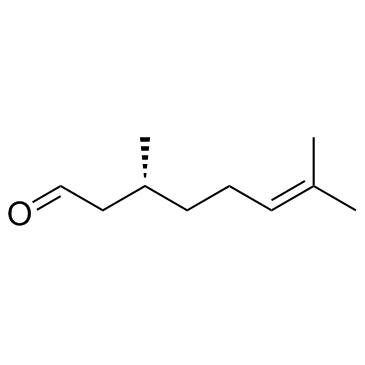
-
GC38262
(R)-(-)-1,3-Butanediol
Le (R)-(-)-1,3-butanediol est utilisé pour réguler le métabolisme des glucides et des lipides.
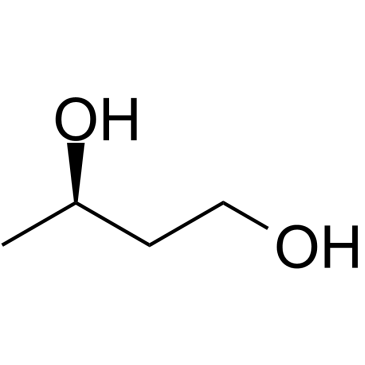
-
GC62737
(R)-(-)-O-Desmethyl Venlafaxine D6

-
GC30210
(R)-3-Hydroxybutanoic acid
L'acide (R)-3-hydroxybutanoÏque est un métabolite, et converti À partir de l'acide acétoacétique catalysé par la 3-hydroxybutyrate déshydrogénase.
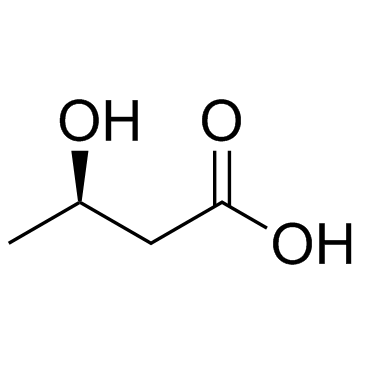
-
GC61759
(R)-3-Hydroxybutanoic acid sodium
L'acide (R)-3-hydroxybutanoÏque sodique (acide (R)-3-hydroxybutyrique) est un métabolite converti À partir de l'acide acétoacétique catalysé par la 3-hydroxybutyrate déshydrogénase.
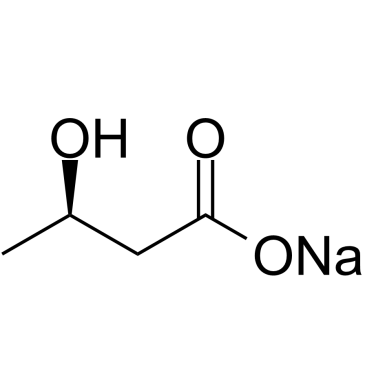
-
GC71626
(R)-3-Hydroxybutanoic acid-13C2 sodium
(R)-3-droxybutanoic acid-13C2 (sodium) is the 13C labeled (R)-3-droxybutanoic acid (sodium) .

-
GC30661
(R)-3-Hydroxyisobutyric acid
L'acide (R)-3-hydroxyisobutyrique est un intermédiaire dans les voies de la l-valine et de la thymine et joue un rÔle important dans le diagnostic des très rares maladies métaboliques héréditaires de l'acidurie 3-hydroxyisobutyrique et du déficit en méthylmalonique semialdéhyde déshydrogénase.
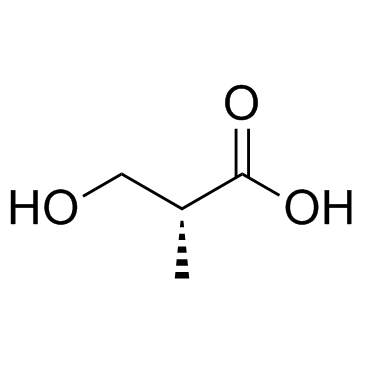
-
GC38282
(R)-5-Oxopyrrolidine-2-carboxylic acid
(R)-5-Oxoproline, (+)-Pyroglutamic Acid
L'acide (R)-5-oxopyrrolidine-2-carboxylique est un métabolite endogène.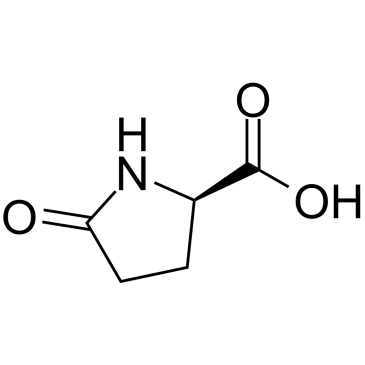
-
GC19012
(R)-GNE-140
(R)-GNE-140 est un puissant inhibiteur de la lactate déshydrogénase A (LDHA), avec des IC50 de 3 nM et 5 nM pour LDHA et LDHB, respectivement; (R)-GNE-140 est 18 fois plus puissant que l'énantiomère S.
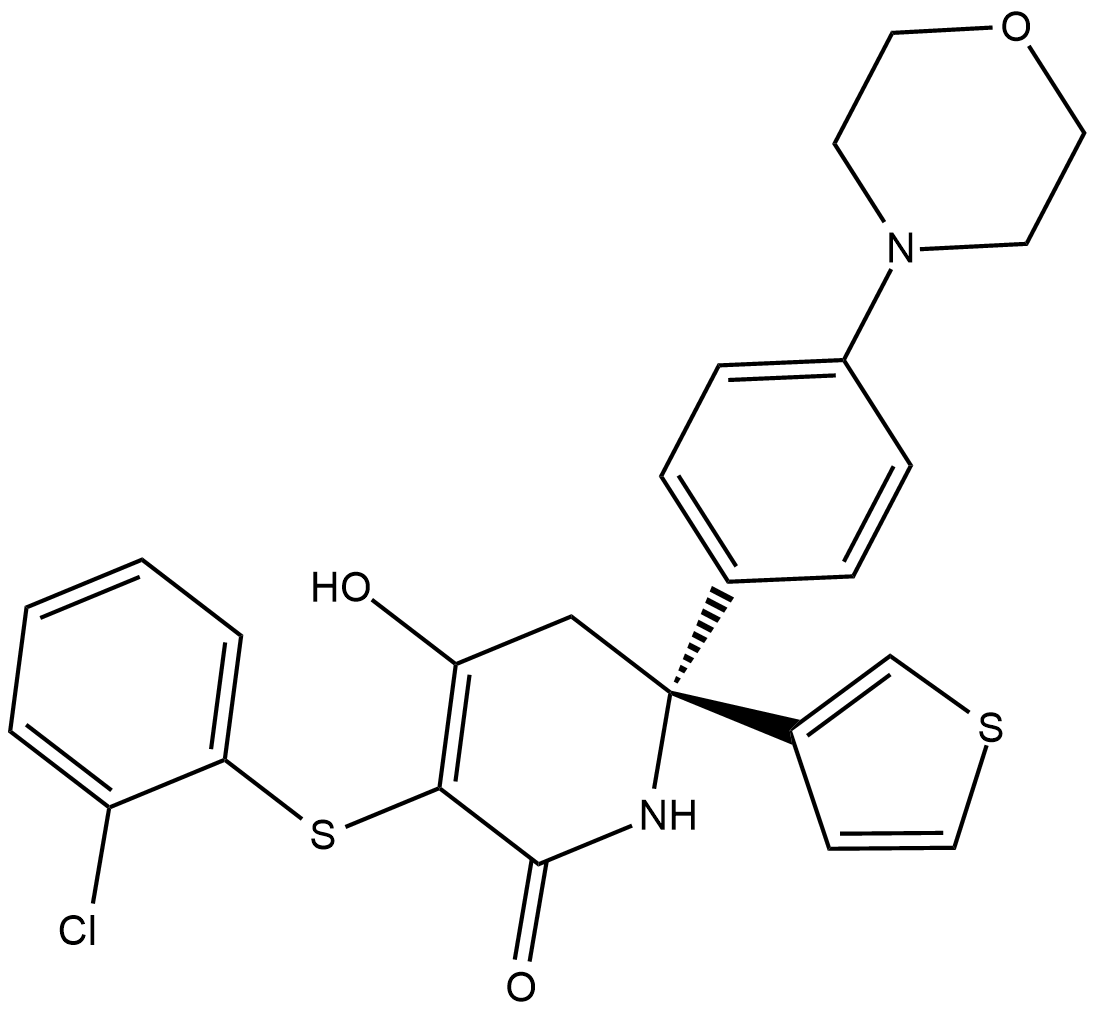
-
GC52290
(R)-HTS-3
An inhibitor of LPCAT3

-
GC61858
(R)-MLN-4760
(R)-MLN-4760, l'énantiomère R du MLN-4760, est un inhibiteur de l'ACE2, avec une IC50 de 8,4 μM.

-
GC38364
(R)-Ornithine hydrochloride

-
GC38363
(R)-pyrrolidine-2-carboxylic acid
L'acide (R)-pyrrolidine-2-carboxylique est un métabolite endogène.
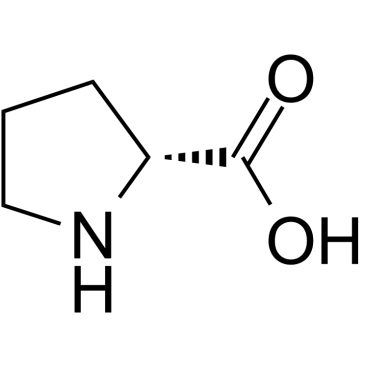
-
GC38720
(R)-Trolox
Le (R)-Trolox est un analogue de la vitamine E et un inhibiteur compétitif de la tyrosinase avec une valeur Ki de 0,83 mM et une valeur ID50 de 1,88 mM. Le (R)-Trolox a une plus forte affinité pour la tyrosinase que l'énantiomère (S) (valeur Ki de 0,61 mM).
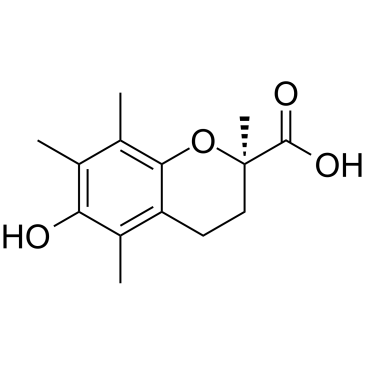
-
GC39832
(R,R)-(+)-Hydrobenzoin
La (R,R)-(+)-hydrobenzoÏne est un organocatalyseur.
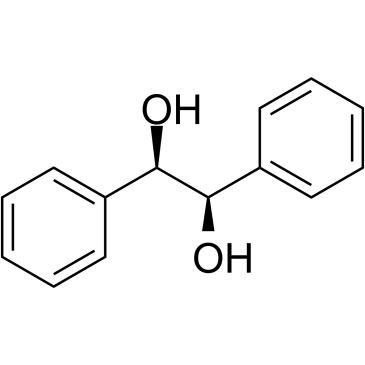
-
GC41722
(R,S)-Carvedilol Glucuronide
(R,S)-Carvedilol glucuronide is a racemic mixture of the carvedilol metabolites (R)-carvedilol glucuronide and (S)-carvedilol glucuronide.

-
GC34417
(R,S)-Ivosidenib ((R,S)-AG-120)
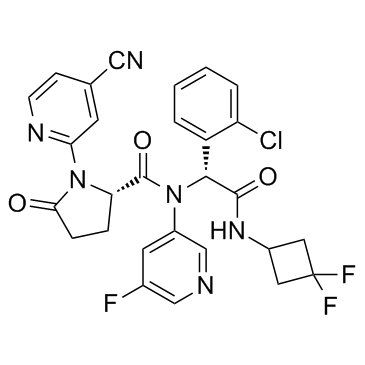
-
GC60410
(Rac)-3′-Hydroxy simvastatin
(Rac)-3′ ; - L'hydroxysimvastatine est un métabolite de la simvastatine.
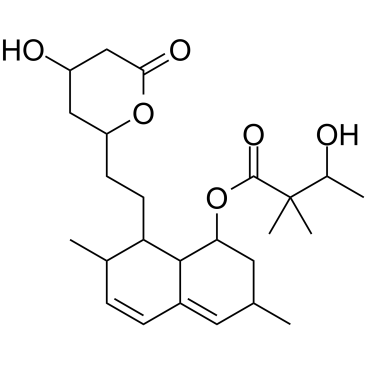
-
GC68414
(Rac)-Atropine-d3
(Rac)-Tropine tropate-d3; (Rac)-Hyoscyamine-d3
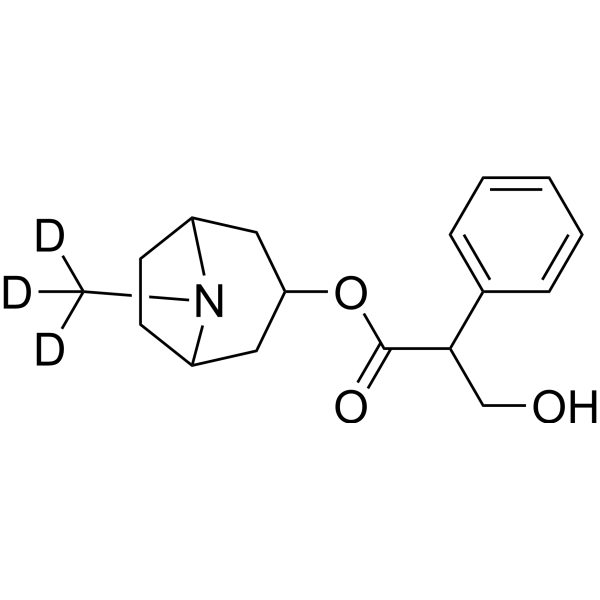
-
GC67993
(Rac)-Cotinine-d4
(±)-Cotinine-d4; (Rac)-NIH-10498-d4
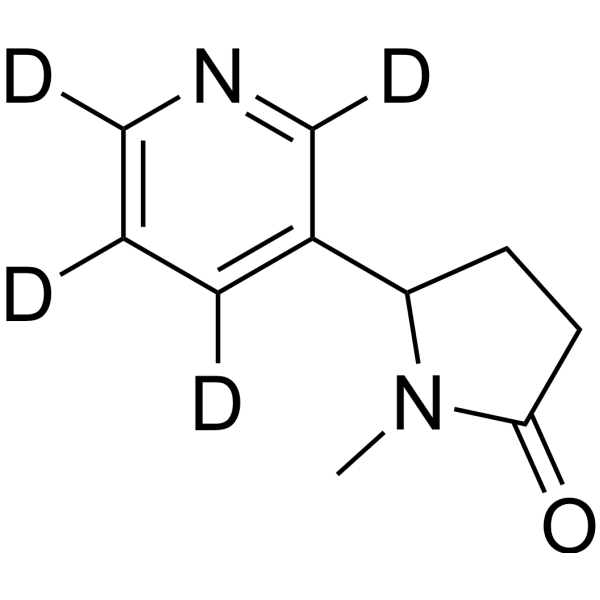
-
GC62744
(Rac)-OSMI-1
(Rac)-OSMI-1 est le racémate d'OSMI-1.
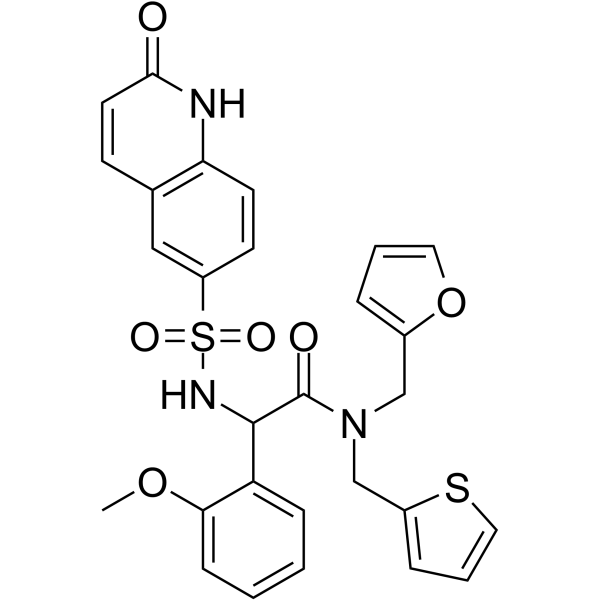
-
GC39833
(S)-(+)-1,2-Propanediol
Le (S)-(+)-1,2-propanediol est un métabolite endogène.
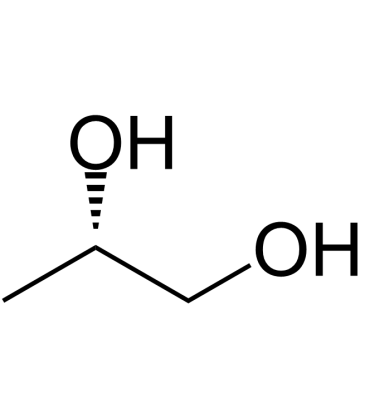
-
GC62747
(S)-(-)-Citronellal
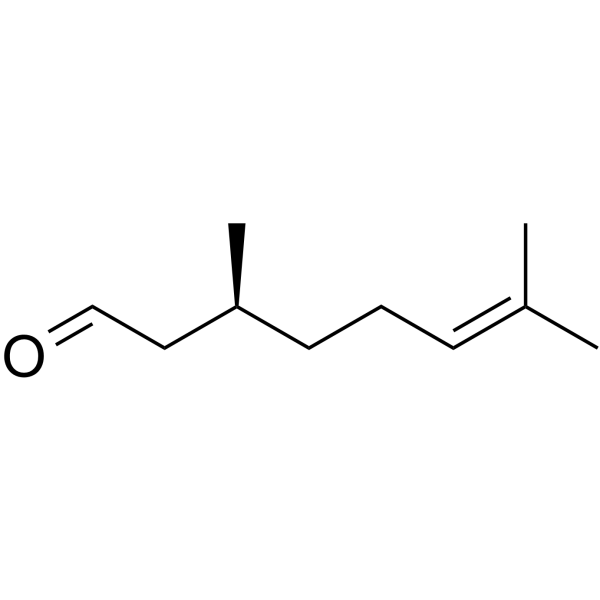
-
GC38371
(S)-(-)-Phenylethanol
Le (S)-(-)-phényléthanol est un métabolite endogène.
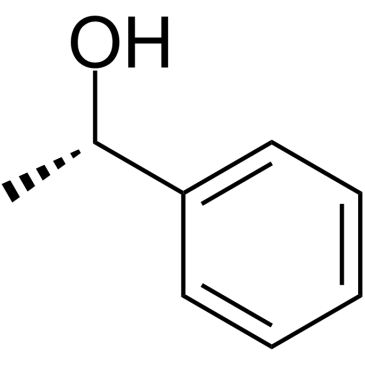
-
GC62748
(S)-2-Amino-3-(4-hydroxy-3,5-diiodophenyl)propanoic acid dihydrate
L'acide (S)-2-amino-3-(4-hydroxy-3,5-diiodophényl)propanoÏque dihydraté est un métabolite endogène.

-
GC31630
(S)-2-Hydroxy-3-phenylpropanoic acid
L'acide (S)-2-hydroxy-3-phénylpropanoÏque est un produit du catabolisme de la phénylalanine.
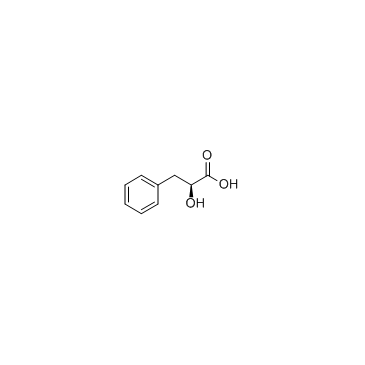
-
GC64746
(S)-2-Hydroxybutanoic acid
L'acide (S)-2-hydroxybutanoÏque est l'énantiomère S de l'acide 2-hydroxybutanoÏque.
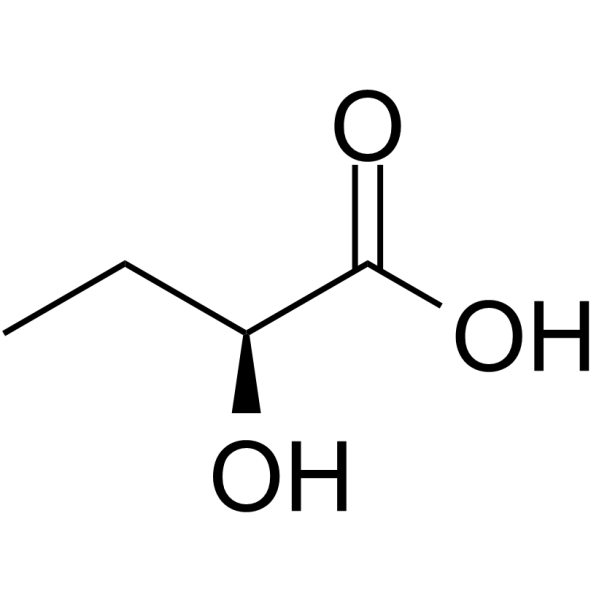
-
GC31622
(S)-2-Hydroxysuccinic acid
L'acide (S)-2-hydroxysuccinique (acide (S)-2-hydroxysuccinique) est un acide dicarboxylique sous forme naturelle, contribue au goÛt agréablement aigre des fruits et est utilisé comme additif alimentaire.
